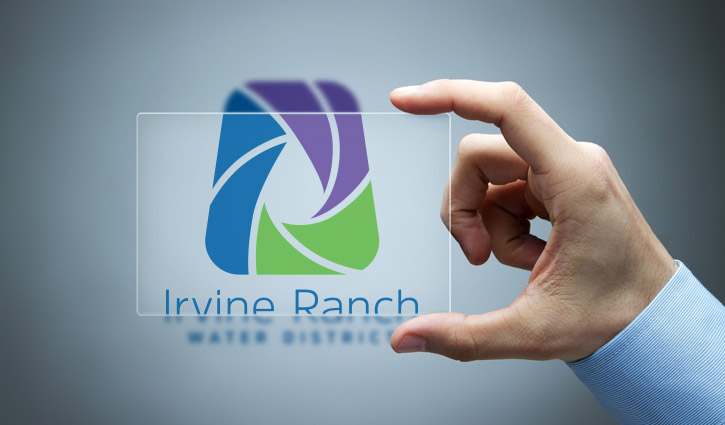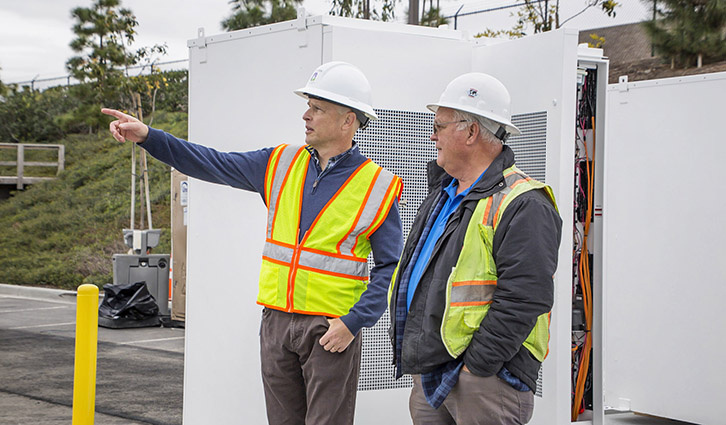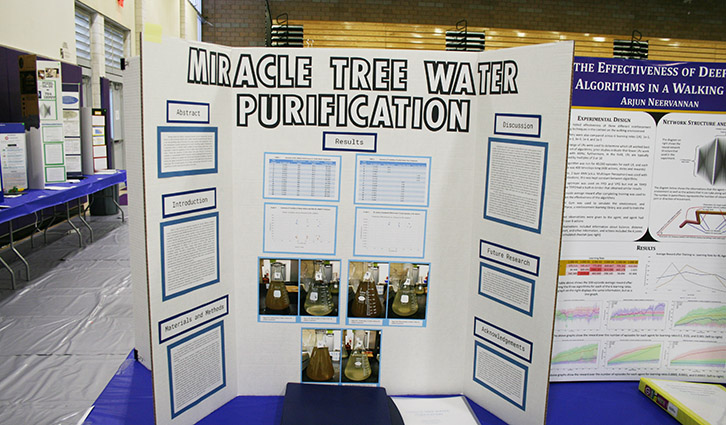A caravan of 18-wheelers and large hoisting cranes completed delivery on Tuesday of 75 high-efficiency Tesla batteries to the Michelson Water Recycling Plant, where they will be installed as part of Irvine Ranch Water District’s money-saving Energy Storage Program.
For those keeping a running tally – that makes two sites down, nine more to go.
Even with many shipments, setups and connections still needed to make the overall project complete, IRWD General Manager Paul Cook said the Energy Storage Program is turning heads in the industry.
“We call this our award-winning project,” he said. “It’s not even finished yet, but this program is already drawing a lot of interest from all over the country and Canada.” (It has already won the Golden Hub of Innovation Award from the Association of California Cities, Orange County; and the Best Energy Program Award for medium utilities from the California Municipal Utilities Association.)
IRWD’s Energy Storage Program is the nation’s largest network of energy storage systems at a public agency. The purpose of the 6.25 MW/35.7 MWh system is two-fold: It allows the district to store energy when rates are lowest, making it available at peak hours when rates are highest; it also provides a stored source of power for Southern California Edison to tap into when necessary to avoid interruptions in service.
The system will be installed at 6 of IRWD’s largest and most energy-intensive facilities: water recycling plants, water treatment plants, and high-energy pumping stations.
To date, batteries have been installed and are in operation at the Deep Aquifer Treatment System. The Michelson system will be operational soon, and all other locations are scheduled to be up and running by the end of 2018.
The system will be owned and operated by Advanced Microgrid Solutions. The company’s software and predictive algorithms regulate the use, transfer and storage of power in the system for optimum efficiency. A private-public partnership between AMS and IRWD ensures that the water district will save at least $500,000 in energy costs each year. Any excess savings in power will be split between the two partners.
IRWD didn’t have to buy or finance the system, but the district still reaps the rewards, Cook explained.
“It sounds great, green and friendly, but it’s really a money-saver right now,” he said. “When we hook it up with renewable sources of energy, that’s when it will really be green.”
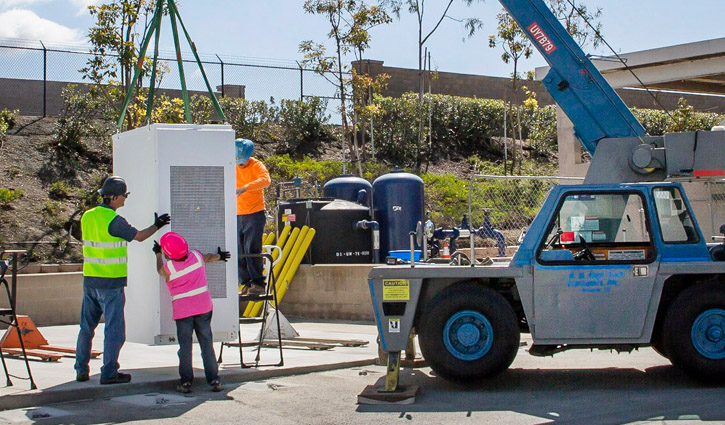
Workers guide one of the system’s battery storage compartments onto its platform at IRWD’s Michelson Water Recycling Plant.
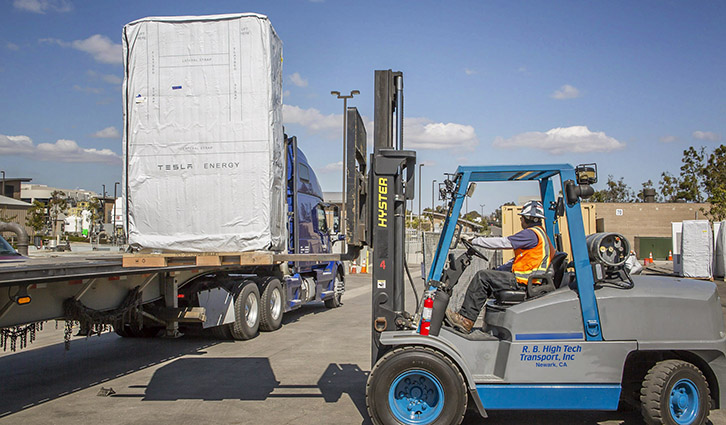
A forklift operator raises a wrapped Tesla battery storage compartment from the bed of a semi-trailer truck during delivery.
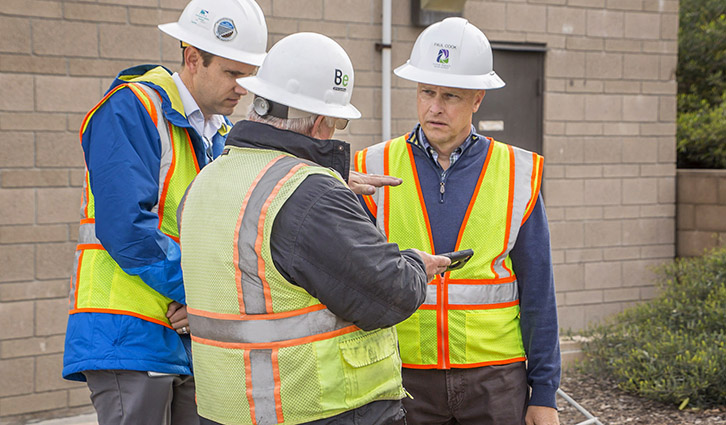
IRWD General Manager Paul Cook, right, discusses details of the system with Senior Engineer Jacob Moeder, left, and Project Superintendent Dave Mercer of Core States.















